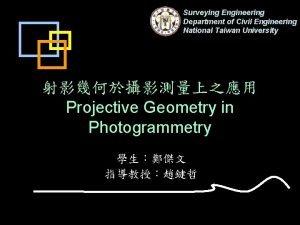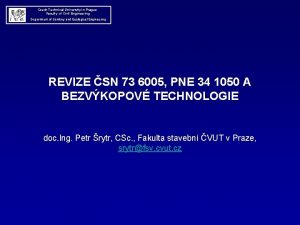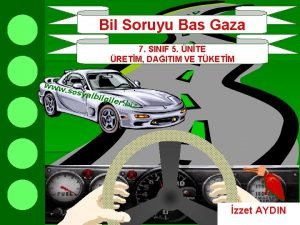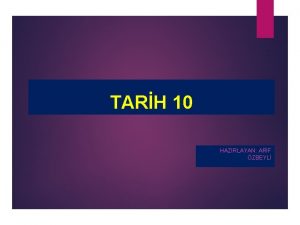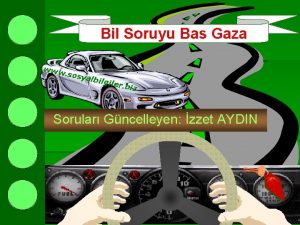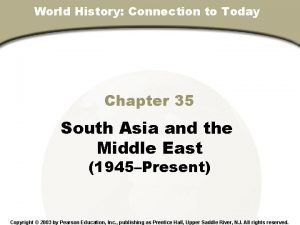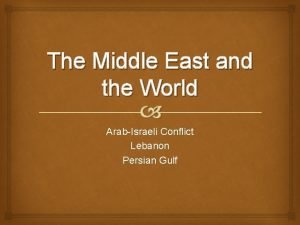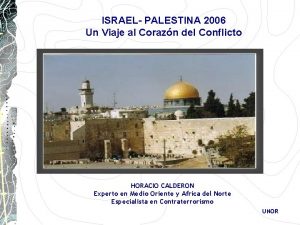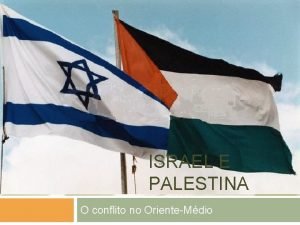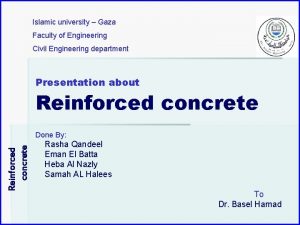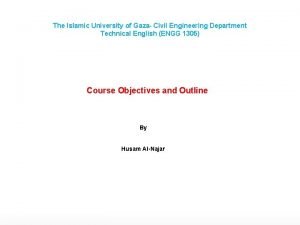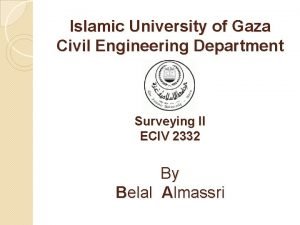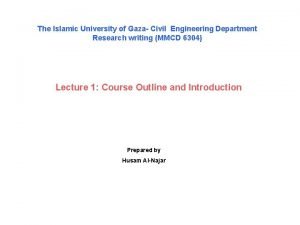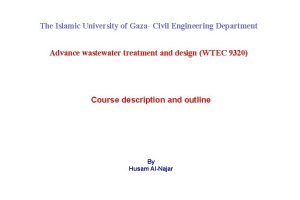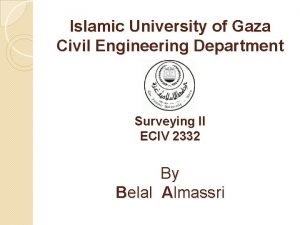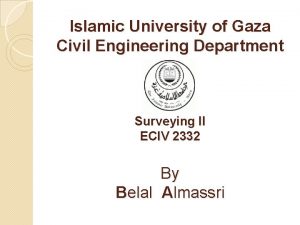The Islamic University of Gaza Civil Engineering Department










- Slides: 10

The Islamic University of Gaza- Civil Engineering Department Technical English (ENGG 1305) Unit 3. Components and assemblies By Husam Al-Najar

Outline of the unit Describing component shapes and features Explaining and assessing manufacturing techniques Explaining jointing and fixing techniques Describing positions of assembled components 1. Describing component shapes and features: Language note. layout, laid out, profile, configuration circular, rounded, rectangular, cylindrical, linear, triangular The nouns and adjectives are usually different (a rectangle / a rectangular shape, a cylinder / a cylindrical shape), but there are exceptions (a square / a square shape, an oval / an oval shape).

4 6 2 5 1 3 rounded rectangular cylindrical linear triangular

The plug resists pullout forces. Nothing can touch the pins if the plug is partially pulled out It’s difficult to pull out Children can’t stick things in the socket. If the mechanism is too sensitive, it can be difficult to insert the plug.

2. Explaining and assessing manufacturing techniques Sawing Shearing Drilling Milling Flame-cutting

Vocabulary hardness = a material’s resistance to abrasion toughness = a material’s resistance to breaking when subjected to tension (stretching) or bending thermal properties = a material’s characteristics at different temperatures thermal stability = a material’s ability to behave consistently at different temperatures (important because cutting processes such as sawing and grinding generate heat, which can damage thermally sensitive materials) electrical properties = a material’s ability to conduct electricity and its behaviour when an electric current passes through it (important because some cutting processes use an electric arc, only suitable with materials that are effective electrical conductors – i. e. metals) edge quality = the degree of smoothness of the edge of a material after it has been cut (important because some techniques produce smoother cuts than others) production volume = the amount produced (usually by a factory) (important because some cutting techniques are relatively time-consuming, making them unsuitable for mass production) cutting wheel = an abrasive or toothed wheel designed to cut materials (note that milling machines use toothed metal cutting wheels to progressively shave thin layers of metal from the surfaces of components producing swarf = metal shavings produced by milling machines) grinding = using an abrasive wheel to grind away the surface, producing hot particles of molten metal due to heat from friction in the form of sparks combustible = can be burned

guillotine kerf toothed blade abrasive wheel hole-saw

3. Explaining jointing and fixing techniques screw rivet clip bolt screw together weld adhesive rivet each other on to adhesive clip onto

4. Describing positions of assembled components


